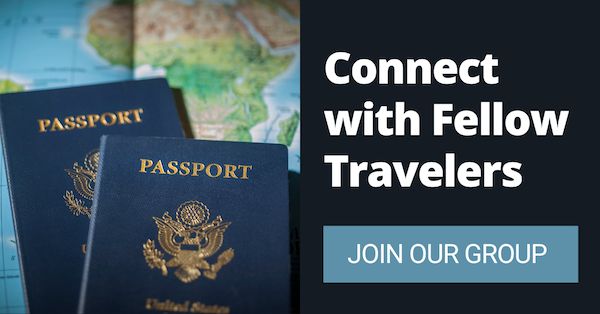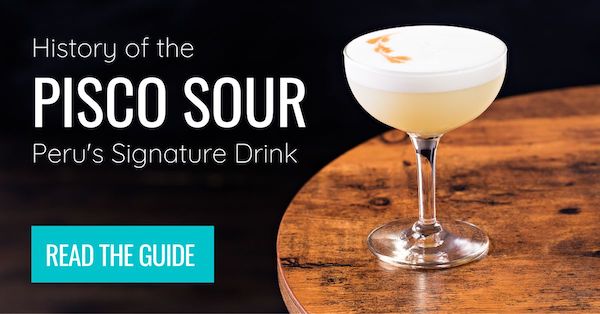
How to Travel With Someone Who Has the Opposite Planning Style: A Guide to Planner-Spontaneous Partnerships
By: Heather Keys
Skip to Section
Article Summary
You’ve got your color-coded itinerary mapped out to the minute, while your travel buddy thinks “planning” means remembering to bring their passport. Before you start hyperventilating about their chaos meeting your order, take a breath and consider this wild idea: they might actually make your trip better.
This guide breaks down why opposite travel styles create magic when they work together, from how spontaneous companions spot amazing opportunities your research missed to why their “let’s see what happens” attitude keeps you present in the moment. You’ll learn practical strategies for making these partnerships work, including how to divide responsibilities, build flexibility into schedules, and communicate effectively when one person wants structure and the other craves freedom.
- Spontaneous travelers notice hidden gems and local experiences that guidebooks miss while you’re checking off planned attractions
- Clear responsibility division works best when planners handle reservations and spontaneous types find restaurants and local experiences
- Flexible scheduling with planned anchor points and open time slots satisfies both planning needs and adventure cravings
- Daily morning check-ins help coordinate the day’s balance between scheduled activities and spontaneous discoveries
- Mixed-style partnerships create trips with solid frameworks for must-see sights plus unexpected adventures that become favorite memories
Some travelers treat vacation prep like a military operation. If this sounds familiar, you might be a planning enthusiast: your TripAdvisor saved places could fill a guidebook. You’ve bookmarked every travel article you could find about your destination, and you’ve got them arranged into folders. Your phone houses seven different travel apps, from Rome2Rio for transportation to XE Currency for real-time exchange rates, and you actively use every single one.
Your travel buddy, on the other hand, might not have done so much research – actually, they may even be a “let’s just wing it” type. But before your eye starts twitching, consider this: traveling with your planning opposite might transform your trip in ways your spreadsheets never predicted!
Why Opposite Travel Styles Create Better Trips
Spontaneous travelers can bring invaluable insights and complementary skills and outlooks to your perfectly planned adventure.
They Spot Opportunities Between Bullet Points
While you’re checking your watch to reach the Colosseum at your pre-booked entry time, your spontaneous companion notices a tiny gelato shop where locals are lining up. They pull you into experiences your guidebooks never mentioned, like a neighborhood festival happening just around the corner or a family-run restaurant that doesn’t have a website.
They Prove Plans can Change Without Disaster
What if you meticulously researched the best restaurants to visit for the short time you’re in your dream destination, and…the one you had your heart set on has closed for a private event? While you’re frantically scrolling through backup options, your spontaneous friend may have already struck up a conversation with someone who’s recommending the place next door. The food’s just as good, and it’s cheaper!
They Transform Your Itinerary into Stories
You’ll see everything on your list. But with a spontaneous travel partner, you’ll also stumble into a once-a-year carnival, find a hidden viewpoint to watch the sunset, and maybe somehow get invited to join a new group of friends. Your planned activities are the framework, and your spontaneous adventures are what make the experience a unique one, perfect for you and your travel buddy.
They Keep You in the Present Moment
When you’re constantly checking the next item on your schedule, you might miss what’s happening right now. Your spontaneous friend doesn’t think about the 3pm museum tour while eating lunch. They notice the street musician’s unusual instrument, the way afternoon light hits the cathedral, or an interesting conversation happening at the next table over.
Creating a Successful Planning Partnership
Making opposite travel styles work requires honest communication before you ever leave home.
Establish Clear Responsibilities
Create a division of labor that plays to each person’s strengths. You handle the non-negotiable reservations: accommodations, transportation between cities, and tickets for popular attractions that sell out. Your spontaneous companion takes charge of finding interesting restaurants for meals you haven’t planned, choosing neighborhoods for free time, and identifying local experiences.
Build Flexibility into Your Schedule
Instead of planning every minute, focus on scheduling key activities with generous buffers between them. Book a Sagrada Familia tour for 10am, but leave the afternoon open. Plan for dinner at 7pm, but keep lunch flexible. This approach calms your planning brain while giving your partner room to work their spontaneous magic.
Institute Daily Planning Sessions
Every morning over coffee, review the day together. Share the planned elements (museum at 2pm, dinner reservation at 8pm) and discuss possibilities for the unscheduled time. Your spontaneous partner might have noticed a market nearby or heard about an interesting walking tour from other travelers at breakfast.
Create a Veto System
Each person gets a set number of “absolutely yes” and “absolutely no” cards for the trip. Maybe you absolutely must see Machu Picchu at sunrise. They absolutely refuse to wait in any line longer than 30 minutes. When someone plays a veto card, respect it without debate.
Finding Your Travel Opposite
Ready to find a spontaneous travel partner to balance your planning prowess?
Local Travel Groups and Meetups
Meetup travel groups attract both planners and free spirits. Watch for the person who shows up without reading the full event description or asks “where are we going again?” halfway through the meeting.
Online Travel Communities
Reddit’s travel communities reveal travel styles through posts and comments. Look for users whose trip reports make you slightly anxious with their “we just figured it out when we got there” approach. Travel forums also show different planning philosophies in action.
Travel Connection Apps
Apps like Travello connect travelers with different styles. Pay attention to profile descriptions. Planners mention organization, research, and detailed itineraries. Spontaneous types use words like “flexible,” “go with the flow,” and “hidden gems.”
Best Destinations for Mixed Planning Styles
Some destinations naturally accommodate both planning and spontaneity.
European Cities With Structure and Surprises
Barcelona offers the perfect balance. Planners can book Park Güell tickets and reserve tables at restaurants, while spontaneous explorers can get lost in the Gothic Quarter’s medieval streets.
Tokyo satisfies both styles. The public transport system and restaurant reservations appeal to planners, while the endless alleyways full of tiny bars and unique shops delight spontaneous souls.
Flexible Island Destinations
Greek islands work beautifully for mixed planning styles. Book your ferry tickets and accommodations in advance, then leave each day open for beach discovery and finding the perfect taverna for lunch.
Hawaii balances structured activities with spontaneous exploration. Reserve spots for Pearl Harbor or volcano tours, then spend other days following the road to whatever beach or food truck catches your eye.
Adventure Destinations With Built-In Flexibility
New Zealand caters to both styles. Book your Milford Sound cruise and accommodation, but leave room for spontaneous scenic drives and unexpected hiking trails.
Costa Rica offers similar flexibility. Schedule your zip-lining adventure or national park visit, then let spontaneity guide you to hidden waterfalls and local sodas serving casados.
Communication Strategies for Different Planning Styles
Success lies in understanding how each style communicates and making adjustments.
For Planners Dealing With Spontaneous Partners
Accept that “we’ll figure it out” is a complete plan in their mind. When they suggest doing something, they mean right now, not after checking reviews and calculating travel time. Learn to ask clarifying questions: “Are you thinking we head there now or after lunch?”
For Spontaneous Travelers With Planning Partners
Your partner’s need for structure isn’t about controlling you. It’s about reducing anxiety and feeling prepared. When you have an idea for a spontaneous adventure, frame it within their existing structure: “Since we have three hours before dinner, want to check out that market?”
Making Peace With Different Travel Styles
The secret? Recognizing that both styles create value. Your planning keeps everyone sheltered, fed, and able to see the major sights. Their spontaneity adds the unexpected moments that become favorite memories.
You’ll still check reservations multiple times. They’ll still suggest random detours twenty minutes before your scheduled tour. But somewhere between your color-coded itinerary and their “let’s see what happens” attitude lies the sweet spot where memorable trips happen.
Practical Tips for Your Next Mixed-Style Trip
Start with a weekend trip before committing to two weeks abroad. This lets you test your communication strategies without major investments.
Set clear expectations about the balance between planning and spontaneity. Maybe you agree on a 60 / 40 split, where 60% of the trip follows the itinerary and 40% remains open.
Create a shared document accessible to both travelers. Include confirmed reservations, must-see attractions, and important information like embassy contacts and travel insurance details. Leave space for spontaneous additions along the way.
Pack for flexibility. Your spontaneous partner might find an amazing hiking trail or beach you hadn’t researched. Having versatile clothing and a small daypack prevents missed opportunities.
Turning Opposite Styles Into Travel Superpowers
When planners and spontaneous travelers join forces, they create a travel experience neither could achieve alone. The planner brings the framework that makes ambitious trips possible. The spontaneous traveler adds the flexibility that turns good trips into unforgettable adventures.
Your perfectly researched restaurants might close. Their spontaneous finds might sometimes disappoint. But together, you’ll figure it out and probably have more fun than either of you would traveling solo.
Ready to find your travel opposite? The world is waiting with both scheduled tours and surprise adventures!
About the Author
Originally from Indiana, Heather believes every destination has a story worth telling and a reason to visit. With a deep love of adventure, history, and psychology, she shares travel trivia, tips, and inspiration to encourage you to explore the world with curiosity and optimism. Read her other articles on Frayed Passport here.Featured image by Marvin Meyer on Unsplash
Information published on this website and across our networks can change over time. Stories and recommendations reflect the subjective opinions of our writers. You should consult multiple sources to ensure you have the most current, safe, and correct details for your own research and plans.
Frayed Passport is a participant in the Amazon Associates Program, an affiliate advertising program designed to provide a means for sites to earn advertising fees by advertising and linking to Amazon.com. We also may share links to other affiliates and sponsors in articles across our website.




